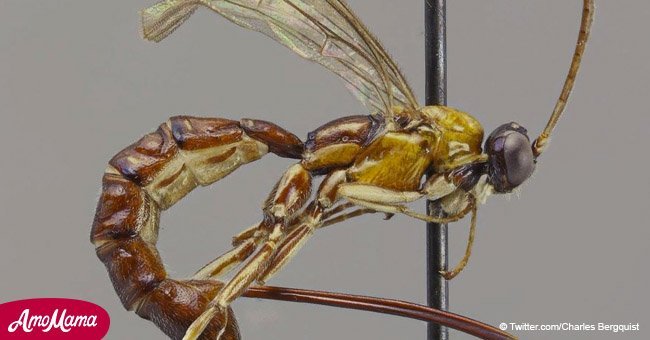
Newly-discovered wasp with giant stinger is causing a stir on the internet
The new species discovered in the Amazons has surprised everyone including the scientists.
Researchers from the University of Turku, Finland were amazed to come across a new species of wasp which possesses a previously unknown massively large stinger.
This new creature was found in the transitional zone between the Andes and the Amazonian lowland rainforest, uses its stinger both for laying eggs and injecting venom.
The new species named Clistopyga crassicaudata was discovered in the western Amazonia.
Researchers from the Biodiversity Unit of the University of Turku, have credited with discovering several new animal species from all over the world – especially from Amazonia.
Read more about Clistopyga crassicaudata on our Twitter account @amomama_usa.
Professor in Biodiversity Research Ilari E. Sääksjärvi mentioned that the stinger was not only long but also significantly broad, something unheard of till now.
The stinger served the function of a weapon and also aided in laying eggs. The wasps lay eggs in spiders. First, it identifies a spider and injects its venom into the spider to paralyze it. The wasp then lays the eggs into the spider.
The larva of the wasp hatches and eats the spider. The preferred spider species of this wasp is not known yet. The Clistopyga parasitoid wasp could use its stinger to trap the spider within its own nest and paralyze it.
Scientists clarified that, at this point, all information circulated on the internet about the wasp's stinger was merely speculation.
The research group at the Biodiversity unit of the University of Turku is currently applying for funding to understand more deeply the behaviors of Clistopyga parasitoid the wasp species.
They hope to share their discoveries and get people excited about the various behaviors of these newly discovered species.
In turn, it has the potential to make people aware of the need to preserve the vulnerable ecosystems which are the habitats of these species.
